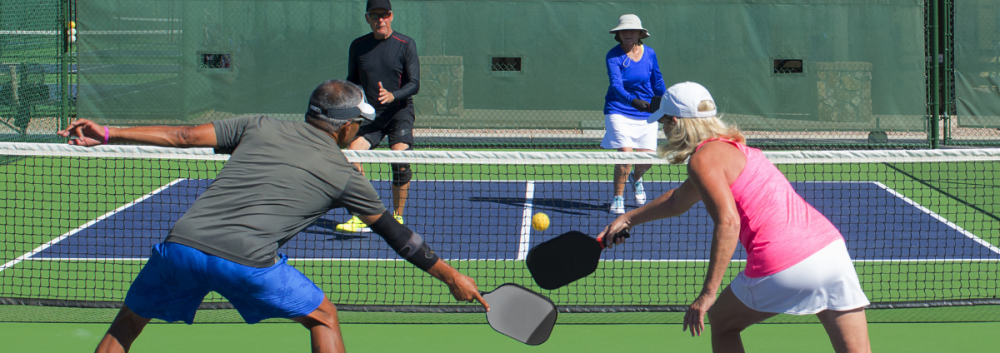Unlike tennis, it is an advantage to receive serve. This is because the serving team have to stay at or behind the baseline in order to wait for your return to bounce (the two-bounce rule) before they can play the ball, It is because the serving team has to allow this second bounce that the receiver’s partner can stand at the NVQ line, the dominant court position. The service receiver would normally return the serve as deep as possible so as to be able to advance to join their partner at the kitchen. So after the first two strokes of a rally, the serve and the return of serve, ideally the receiving pair will both be at the NVZ line and the serving pair pinned to their baseline. That’s the theory.
To receive the serve you should be standing in the ready position and alert with a stance that allows you to push of if you get a short or wide serve. The serve will normally be a deep one to keep you as far back from the net as possible. An ideal serve will land on or just inside your baseline. Beware of standing in the court area. Bear in mind it is easier to move forward to a shortish serve than have to skip backwards for a very deep one. Also moving forward on to the serve gives you the momentum to get up to the kitchen quickly. Having to step back to return the serve can force your return to be short and slow down your advance to the kitchen. Potentially this can keep you at the back of the court or in no man’s land (the zone of transition) as you try to get forward. So, return deep and quickly move up the court to join your partner who should already be there of course.
